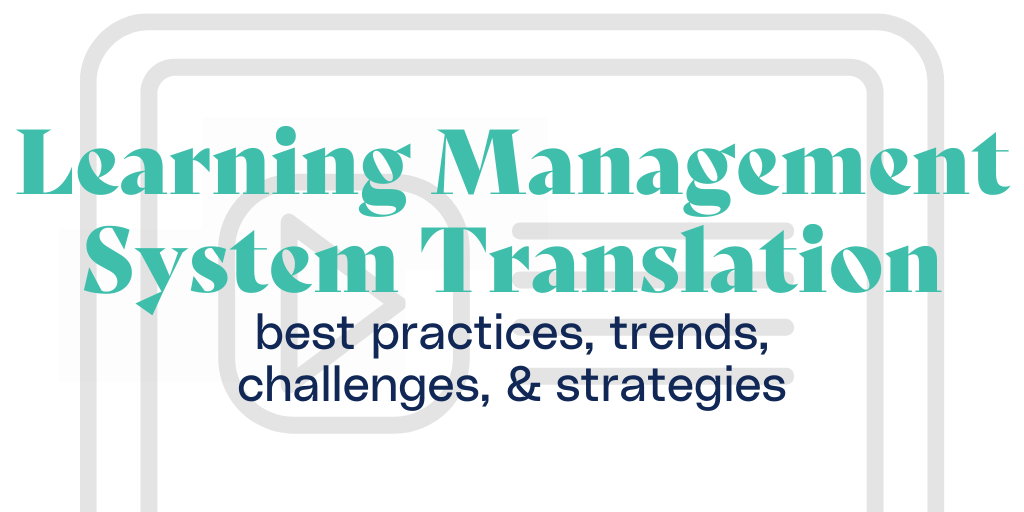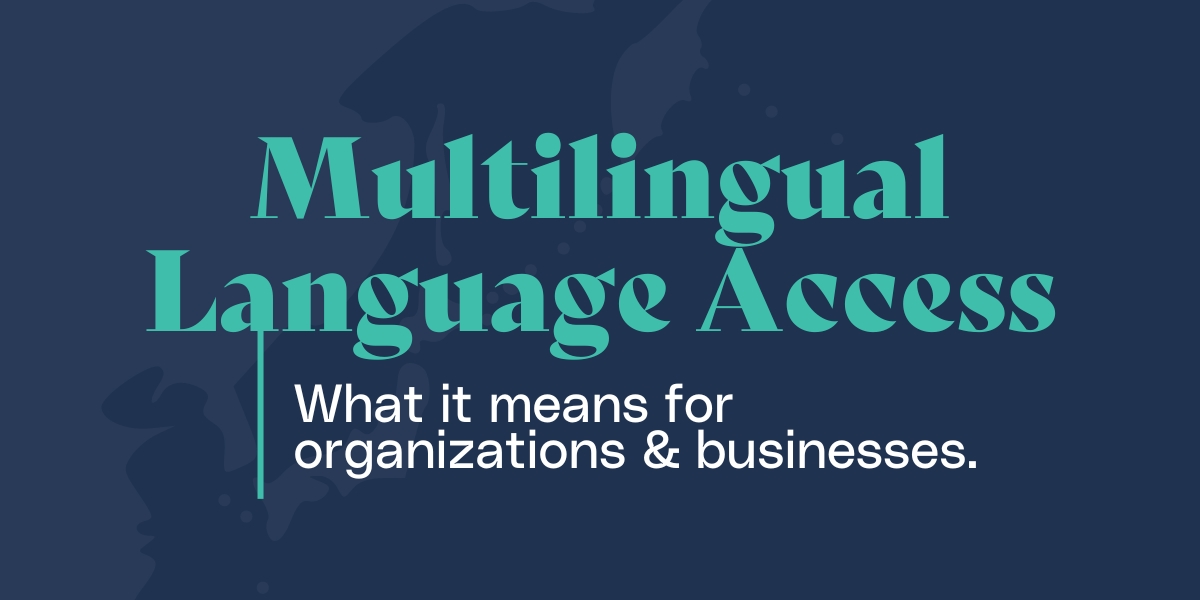The article delves into integrating the translation of multilingual Instructor Led Training (ILT) and Virtual Instructor Led Training (vILT) with a proactive approach that combines the strengths of ILT, vILT, and translation strategies for inclusive and effective learning experiences.
A Background of the Training Landscape
Overview of Training Methodologies
In professional development, the journey of training methodologies spans decades, reflecting the dynamic nature of education and the workforce. Traditional training methodologies were rooted in conventional classroom settings, where instructors delivered content to a physically present audience. This method, known as Instructor Led Training (ILT), had been the primary modality for many years.
As technological advancements began to reshape various industries, a paradigm shift occurred in how organizations approached training. The advent of computers, the internet, and digital technologies paved the way for innovative learning methods. eLearning emerged as a transformative force, allowing learners to access educational resources and courses online, breaking away from the confines of traditional brick-and-mortar classrooms.
Moreover, the rise of eLearning brought about the concept of virtual Instructor-Led Training (vILT), where instructors could conduct sessions remotely through online platforms. This transition marked a significant shift from the traditional face-to-face model, offering unprecedented flexibility and accessibility to learners worldwide.
Evolution of traditional training to technology-driven methods
The evolution of training methodologies is intricately linked to technological progress. The shift from traditional to technology-driven methods was driven by recognizing the limitations of traditional approaches, especially in the face of changing demographics, globalization, and the need for continuous learning.
Traditional methods often struggle to keep pace with the rapidly changing demands of the modern workforce. With its asynchronous and self-paced nature, the emergence of eLearning addressed some of these challenges, enabling learners to acquire knowledge at their convenience. This marked a pivotal moment in the history of training methodologies, emphasizing the importance of adaptability and personalized learning experiences.
Importance of adapting to changing learning environments
The importance of adapting to changing learning environments cannot be overstated in the current professional landscape. The rapid evolution of technology, coupled with shifts in work structures and communication methods, requires a proactive approach to training. Organizations that embrace new methodologies demonstrate an understanding of the diverse needs of their workforce, fostering a culture of continuous learning and development.
As the workplace becomes more globalized, diverse, and digitally connected, training methodologies must evolve to accommodate these changes. The ability to leverage both traditional and technology-driven methods allows organizations to create a balanced and effective approach to training that caters to the varied preferences and requirements of modern learners.
In the following sections, we will explore the intricacies of Instructor-Led Training (ILT) and virtual Instructor-Led Training (vILT), delving into their definitions, benefits, challenges, and the potential for a blended approach that optimizes the strengths of both modalities.
Understanding Instructor-Led Training (ILT)
Definition and Characteristics of Instructor-Led Training
Instructor-led training (ILT) is a conventional approach where a qualified instructor leads a physical classroom session. The characteristics of ILT include real-time interaction, immediate feedback, and hands-on experiences.
The Benefits of Instructor-Led Training:
- Personalized instruction: ILT offers a unique advantage of personalized instruction. Instructors can tailor the pace and depth of the material to the specific needs of individual learners, fostering a more customized learning experience.
- Immediate feedback: Participants benefit from immediate feedback in ILT sessions. This real-time assessment enhances the learning process by addressing questions and concerns promptly, ensuring a more thorough understanding of the subject matter.
- Interpersonal connections: The interpersonal connections forged in ILT sessions contribute significantly to the learning experience. Participants can engage in discussions, collaborate on activities, and build a sense of camaraderie with both the instructor and their peers.
- Hands-on experience: A hallmark of ILT is the emphasis on hands-on experience. Through activities, demonstrations, and interactive exercises, participants gain practical insights and skills that are immediately applicable in real-world scenarios.
Challenges of Instructor-Led Training:
- Geographical limitations: One of the primary challenges of ILT is its geographical limitations. Participants from different regions may find it logistically challenging to attend in-person sessions, limiting the accessibility of the training.
- Scheduling constraints: Coordinating schedules for both instructors and participants can be intricate, especially in large organizations with diverse teams. This constraint can hinder the seamless execution of ILT programs.
- Resource-intensive: ILT can be resource-intensive, demanding physical classrooms, travel arrangements, and printed materials. The associated costs and environmental impact can be substantial, posing challenges for organizations seeking cost-effective and sustainable solutions.
Embracing Virtual Instructor-Led Training (vILT)
Virtual Instructor-Led Training (vILT) harnesses online platforms to deliver training sessions, allowing participants to join remotely. Key features include live interactions, multimedia content delivery, and virtual collaboration tools.
The Benefits of Virtual Instructor-Led Training:
- Accessibility and flexibility: vILT offers unparalleled accessibility and flexibility, including offering virtual interpreting for training in multiple languages in real-time. Participants can join sessions from the comfort of their homes or offices, overcoming geographical barriers and ensuring inclusivity in training programs.
- Cost-effectiveness: Eliminating travel costs and venue expenses makes vILT a cost-effective alternative to traditional ILT. Organizations can allocate resources more efficiently while providing high-quality training experiences.
- Global reach: vILT allows organizations to reach a global audience. This global reach enhances diversity and inclusion in training programs, fostering a rich exchange of perspectives and experiences.
The Challenges of Virtual Instructor-Led Training:
- Technical issues: Technical issues, such as poor internet connectivity or platform glitches, can disrupt the learning experience in vILT. Overcoming these challenges requires robust technical support and contingency plans.
- Lack of face-to-face interaction: The absence of face-to-face interaction is a significant challenge in vILT. While virtual tools facilitate communication, the depth of interpersonal connections may not match the experience of traditional classrooms.
- Engagement and attention concerns: Maintaining participant engagement in a virtual environment poses a challenge. The abundance of distractions and the potential for disengagement require innovative approaches to ensure continuous attention throughout vILT sessions.
Blending ILT and VILT for Optimal Training
Recognizing the individual strengths of instructor-led training (ILT) and virtual instructor-led training (vILT) is pivotal for organizations seeking an optimal training strategy. ILT excels in providing personalized interactions, immediate feedback, and hands-on experiences. The physical presence of an instructor fosters a dynamic learning environment where participants can engage directly with the material and their peers.
On the other hand, vILT offers unparalleled flexibility and accessibility. It goes beyond geographical boundaries, allowing participants to join sessions from different locations and time zones. The digital nature of vILT provides cost-effectiveness, eliminating the need for travel and venue expenses.
Developing a hybrid training approach
A strategic approach involves blending the strengths of ILT and vILT to create a hybrid training model. This approach combines the benefits of both methods, providing a dynamic and adaptable learning experience.
In a hybrid model, foundational concepts and hands-on activities that benefit from in-person instruction can be delivered through ILT. Simultaneously, vILT can be employed for portions of the training that emphasize flexibility, such as theory-based sessions or collaborative discussions. This hybrid model recognizes that not all content requires the same mode of delivery and allows for a tailored approach based on the nature of the material.
Best practices for a seamless transition between ILT and vILT
Implementing best practices ensures a seamless transition between ILT and vILT. Organizations can consider the following best practices:
- Comprehensive instructor training: Equip instructors with the skills needed to navigate both in-person and virtual environments. Training should cover effective use of digital tools, virtual engagement strategies, and methods to adapt content for different modalities.
- User-friendly platforms: Select user-friendly platforms that facilitate easy navigation and engagement for both instructors and participants. Platforms should support interactive features, breakout sessions, and real-time communication.
- Cohesive curriculum design: Develop a curriculum that seamlessly integrates ILT and vILT components. Ensure a logical flow between in-person and virtual sessions, maintaining consistency in content delivery and learning objectives.
- Flexibility for learner preferences: Allow participants flexibility in choosing their preferred learning modality for certain sessions, accommodating diverse learning styles and preferences.
- Robust technical support: Establish a robust technical support system to address any issues that may arise during vILT sessions. This includes troubleshooting technical difficulties, ensuring stable internet connections, and providing guidance on using virtual tools.
- Evaluation and feedback mechanisms: Implement evaluation and feedback mechanisms to continuously assess the effectiveness of the blended approach. Gather input from both instructors and participants to identify areas for improvement and optimization.
By incorporating these best practices, organizations can create a hybrid training approach that maximizes the benefits of ILT and vILT, offering a flexible and impactful learning experience.
The Role of Translation in Training Programs
As businesses operate in increasingly globalized environments, addressing diverse language needs in training programs is paramount. Language diversity within teams necessitates a proactive approach to ensure effective communication and understanding.
Challenges of language barriers in Instructor-Led Training
Language barriers can impede the effectiveness of training programs. Miscommunication and misunderstandings may arise, hindering the transfer of knowledge and skills. By integrating translation and interpreting services into ILT and vILT, these language barriers can greatly reduce or disappear altogether. Here are the best solutions we’ve found to address these challenges.
Real-time translation tools: Addressing language diversity in training programs is pivotal for fostering effective communication. Real-time translation tools, including Remote Simultaneous Interpretation (RSI), are pivotal in overcoming language barriers.
RSI enables the provision of almost real-time interpreting for participants in different locations. This technology facilitates live interpretation of spoken content, allowing individuals with diverse language preferences to engage seamlessly in both ILT and vILT sessions. RSI platforms connect participants with Subject Matter Expert (SME) interpreters who possess in-depth knowledge of the training content, ensuring accurate and contextually relevant interpretations.
Organizations can allocate SME interpreters to specific sessions, enhancing the quality and precision of language interpretation. This human-centric approach ensures that nuances and industry-specific terminologies are accurately conveyed, contributing to a more comprehensive learning experience.
AI Options through RSI: Additionally, RSI can leverage Artificial Intelligence (AI) to augment language interpretation capabilities. AI-driven features, such as language recognition and translation algorithms, work alongside human interpreters to enhance efficiency and address language diversity in a dynamic and technologically advanced manner.
Preparing translated training materials: Providing translated training materials goes beyond language interpretation and involves a comprehensive approach to content adaptation. In addition to language translation, consider the following aspects:
- Desktop Publishing (DTP)/Formatting: Ensure that translated materials maintain a professional and cohesive appearance. Multilingual Desktop Publishing (DTP) or formatting services should be employed to adapt layouts, fonts, and graphics to accommodate different languages. This enhances the visual appeal and ensures clarity and consistency in the presentation of information.
- Video Localization: In the context of vILT, where video content is often utilized, video localization becomes crucial. Videos can be localized in many different ways – subtitles, burned-in captions, voiceover, or any combination of the three. A truly consultative language partner will also tailor the video translation around the target language, dialect, culture, and other creative decisions, such as using human talent or AI for voiceover. Localization ensures that video materials resonate effectively with diverse audiences, creating a more engaging and inclusive learning experience.
- Adaptations for Cultural Sensitivity: Consider cultural adaptations to align training materials with the cultural contexts of diverse audiences. This may involve adjusting examples, case studies, or scenarios to ensure relevance and resonance across different cultural backgrounds.
- Diverse Media Types: Recognize that training materials may span various media types, including presentations, documents, and interactive elements. Tailor the translation approach to suit each medium, addressing specific challenges and opportunities associated with different formats.
By incorporating DTP, formatting, video localization, and cultural adaptations, organizations can ensure that translated training materials are linguistically accurate, culturally relevant, and visually appealing. This holistic approach contributes to a more effective and inclusive training program.
Ready to offer a multilingual Instructor-Led Training course?
The synergy of ILT and vILT, complemented by effective translation strategies, represents a holistic approach to training in the digital age. This comprehensive strategy addresses the challenges posed by geographical constraints, scheduling conflicts, and language barriers and paves the way for a future where learning is truly borderless and inclusive.
We hope you’re ready to begin your multilingual training either in-person or remotely!

What is Multilingual Desktop Publishing (DTP)?

LMS Translation: Bridging the Language Gap in Learning

What is Localization? [28 Practical Localization Tips, Examples, & FAQs]

Language Access: What is Multilingual Language Inclusion?


